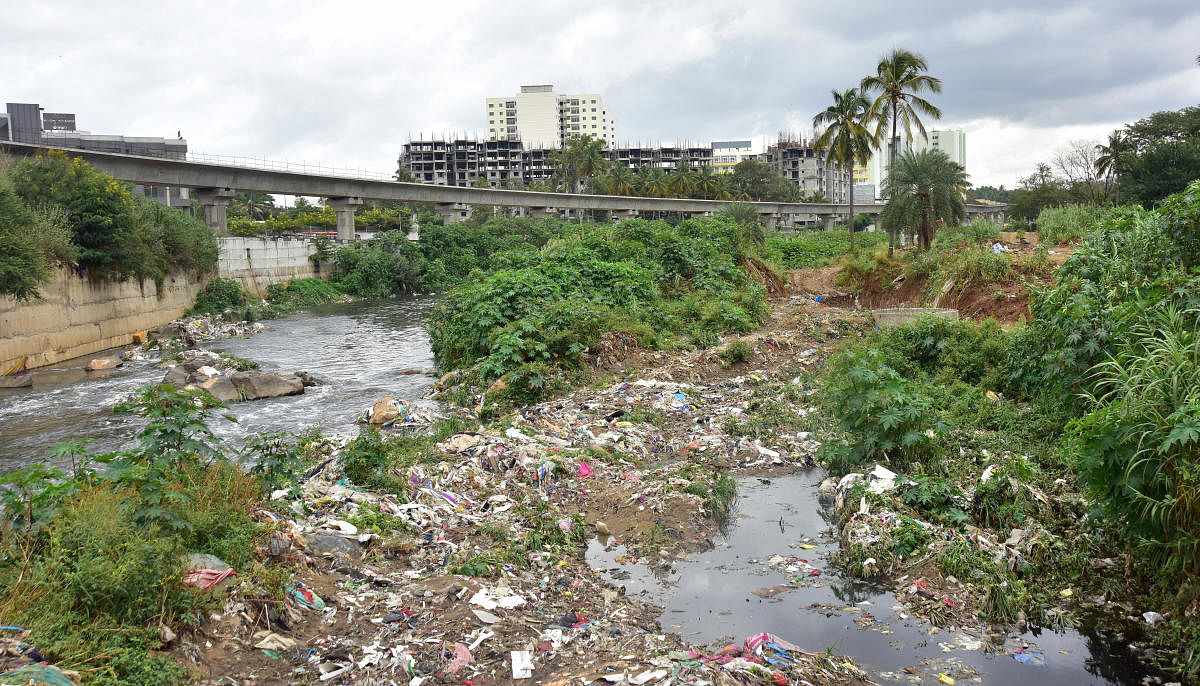
The Vrishabhavathi Valley has suffered permanent damage as the number of its contiguous lakes went down from 71 in the 1970s to 35 in 2017 while an indiscriminate dumping of sewage, solid waste and debris has altered the physical and chemical integrity of what was once a river, says a report by NEERI.
The interim report, submitted by the National Environmental Engineering Research Institute (NEERI) to the High Court of Karnataka, estimates that sewage flow to the valley would go up from the present 576 MLD (million of litre per day) to 720 MLD by 2023. Currently, only 54% of the raw sewage is treated before it enters the river.
A team of NEERI experts studied the drains between the KSR Bengaluru railway station and Sankety Tank as well as the networks in RR Nagar and Dasarahalli zones. While solid waste dumping is the most common feature in all the drains, industrial effluents are seen in drains in the Dasarahalli zone, according to the report.
'Industries dump waste'
"Many local industries dump their waste products directly into the river," the report says, listing pictorial evidence of the discharge of industrial effluents into the stormwater drains.
The report calls the valley a "river" and a tributary of Cauvery.
"It was observed during the field survey that the entire river stretches, including various drains, were filled with all types of solid waste. It is like any waste that is too inconvenient to be thrown anywhere else finds its way into Vrishabhavati river banks," the report notes.
The report suggests measures, from treating all the sewage that runs into the valley, carrying out a detailed survey of the valley, removing encroachments to regular removal of silt and raising public awareness regarding Vrishabhavathi.
One of the key recommendations is demarcating a buffer zone of 30 metres for lakes and 15 metres for stormwater drains and erecting a six-foot-high fence at a distance of one metre from the river.
Six-month deadline
The Urban Development Department has set a six-month deadline to assess the encroachments on the banks of Vrishabhavathi Valley, and directed the Karnataka State Pollution Control Board to regularly monitor the wastewater and lake water for the next three months.
At a meeting held last week to deliberate on the measures recommended by NEERI to save the valley, additional chief secretary of the department Rakesh Singh set out 22 short-term measures and 10 long-term measures while allocating specific work to the BBMP, the BDA, the BWSSB, the Revenue Department and the Bengaluru Urban district administration.
The BDA, the BBMP and Bengaluru Urban deputy commissioner have been directed to immediately appoint marshals to patrol the periphery of lakes. The list covers several issues, from improving stormwater drains and setting up effluent treatment plants for industries within six months to removing hoardings from the periphery of the valley and conducting awareness programmes.
The long-term measure includes surveying the whole 54–km stretch of the valley, fencing the periphery, stopping the flow of all wastewater and desilting within the next one and a half years.